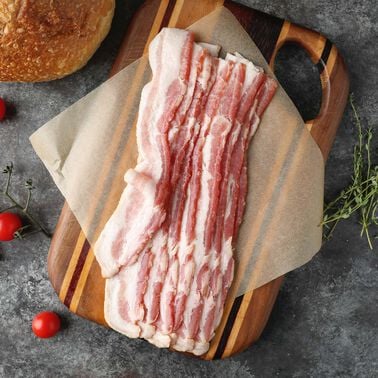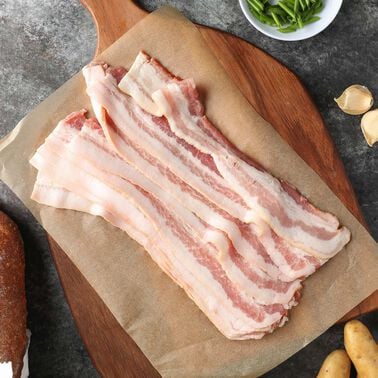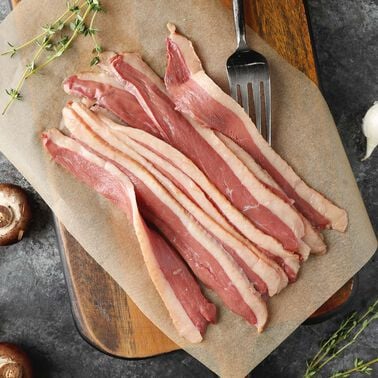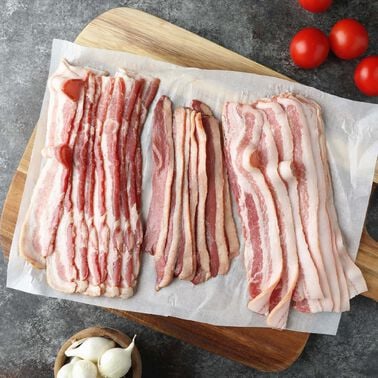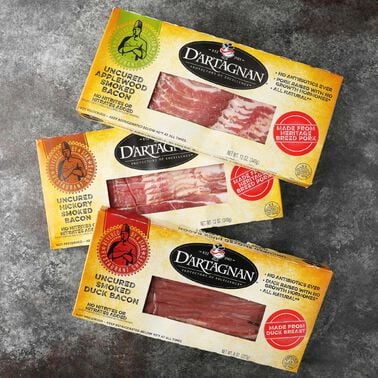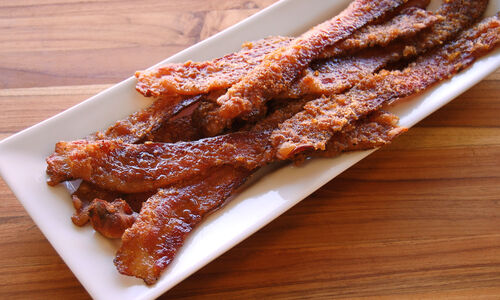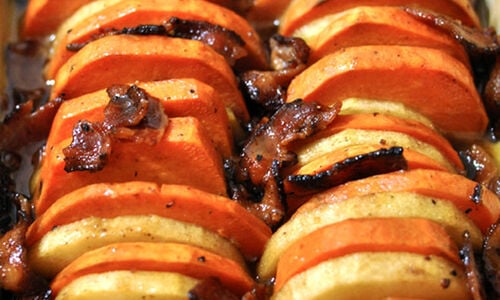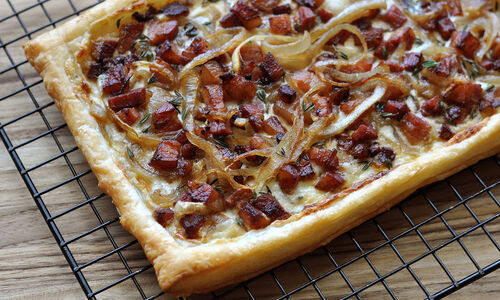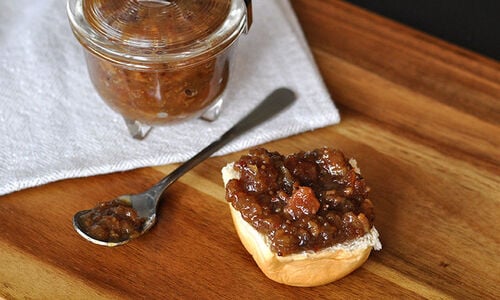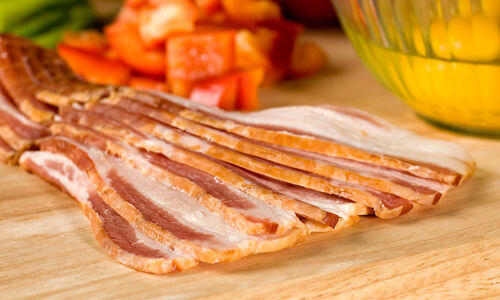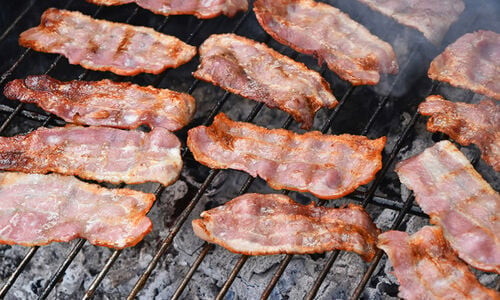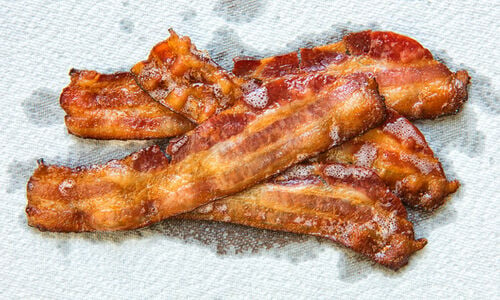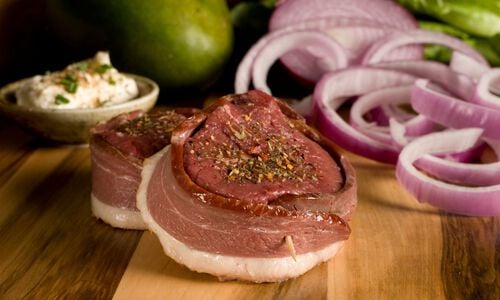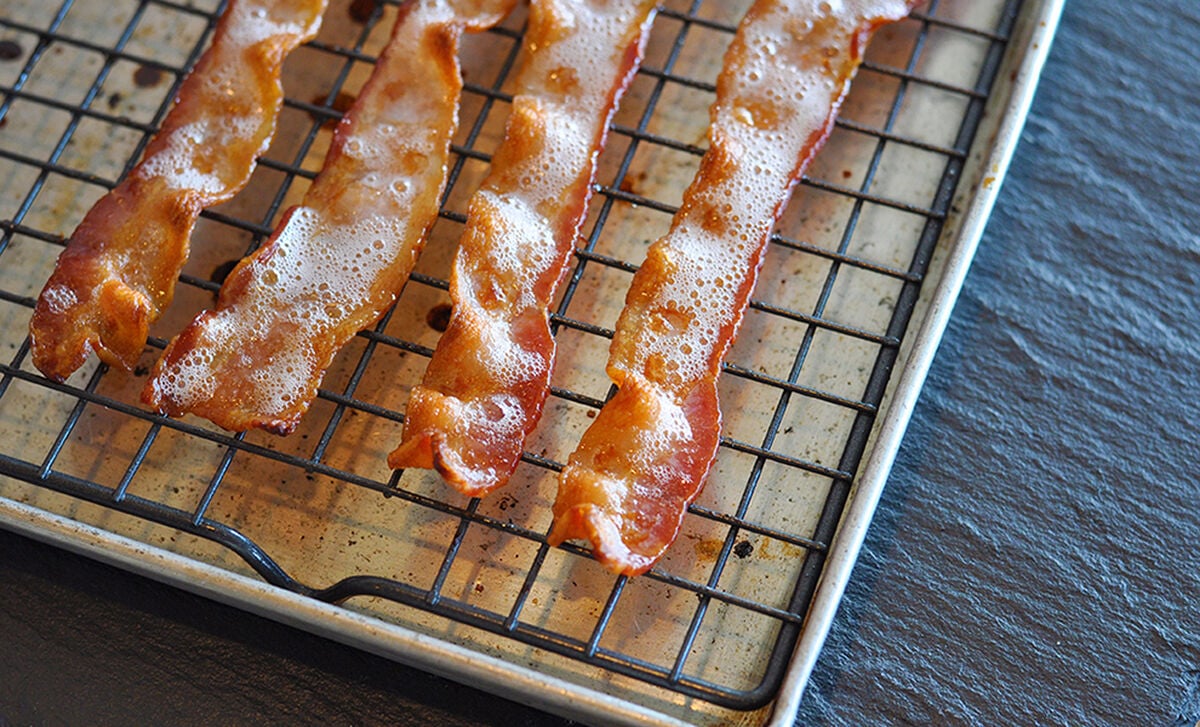
There are many ways to cook bacon in the oven: on a wire rack, on parchment paper, between two sheet pans, or, as we prefer, on an aluminum-foil lined sheet pan.
What You Need
First, you need bacon. We highly recommend our heritage-breed, uncured bacon for this project, but you can proceed with any bacon. Your cooking tools will be a baking sheet (or sheets), aluminum foil, tongs and paper towels.
How to Bake Bacon in the Oven
Preheat the oven to 400 degrees F. Place rack in the lower third of the oven.
Line your baking sheet with aluminum foil to catch the bacon drippings and any little bits that might accumulate. Make sure you use enough to cover the sides of the baking sheet.
Place the bacon slices on the sheet in a single layer. It’s alright if the bacon slices touch, but don’t overlap them. Place the sheet full of bacon in the oven and bake at 400 degrees F for about 15 to 20 minutes. The exact time will vary; it depends on the thickness of the bacon, and how crispy you want the bacon to be.
If you are baking more than one sheet pan of bacon at the same time, be sure to swap the positions of the pans about halfway through, to ensure even cooking.
Keep an eye on the bacon, which will render out fat steadily. It should not splatter around the way it does in a pan on the stove top. If a lot of bacon fat accumulates, feel free to pour it off the pan midway through cooking. Be sure to leave some of the bacon fat, because it creates the same frying effect that you get in a pan, and contributes to the crispy finish we are all seeking.
When the bacon is done, use tongs to transfer it to a plate lined with paper towels. Let it sit for a moment so that any excess bacon fat can be absorbed. It also continues to crisp on the plate. Serve hot, and as soon as possible.
Do’s and Don’ts
DON’T: Some guides will recommend placing the bacon on a wire rack, but in our experience, that just gives you one more thing to clean, and doesn’t really make that much difference in the finished product.
DO: Use parchment paper if you prefer it to aluminum foil. Just be sure to remove it immediately after baking.
DO: Save the bacon fat! Let it cool slightly in the sheet pan, then pour it into a container (a Mason jar is a good choice) and save for sautés, or the next time you roast potatoes.
